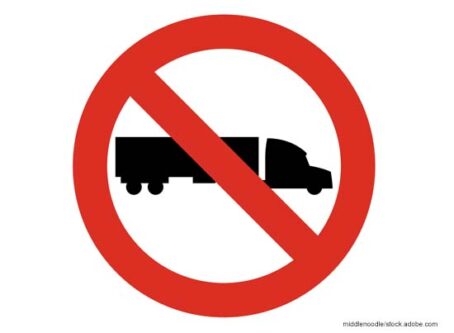Traffic fatalities down overall, but crashes involving large trucks up
Despite an overall downward trend in traffic fatalities, more truck drivers are dying on the nation’s roadways.
According to the latest crash data from the National Highway Traffic Safety Administration, there were 716 fewer traffic fatalities in 2022, a 1.7% decrease from 43,230 in 2021. Although traffic deaths fell in most categories, there was a significant increase in the number of truckers killed in vehicle crashes.
In 2022, nearly 6,000 people were killed in crashes involving large trucks, a 2% increase from the previous year. Among those killed, nearly 1,100 were occupants of a large truck, an 8.5% increase. Of those truck drivers, traffic fatalities involving single-vehicle crashes rose 5%, while multi-vehicle crashes went up 13%.
Injuries as a result of crashes involving large trucks went up nearly 4%, with a more than 5% increase in injuries of people outside the truck. However, injuries of occupants inside large trucks decreased by less than 1%.
It is worth noting that NHTSA defines “large trucks” to include both commercial and noncommercial trucks with a gross vehicle weight rating of more than 10,000 pounds. That includes everything from large pickups like the Ford F-350 to Class 8 tractors.
NHTSA’s overview of traffic crashes in 2022 does not break down large truck crashes by vehicle class. However, the agency’s Fatality and Injury Reporting System tool does and includes data from 2022. According to that data, more than 6,100 Class 3-8 vehicles were involved in fatal crashes in 2022. Of those, nearly two-thirds were Class 8 trucks.
As a percentage increase compared to the previous year, smaller large trucks had a worse year in 2022. In terms of the number of vehicles involved in fatal crashes, there was a 6% increase in Class 3 trucks, a 6.5% increase in Class 4 trucks, a 3% increase in Class 5 trucks and a 6% increase in Class 6 trucks. The number of Class 7 trucks involved in fatal crashes dropped by 7%. Meanwhile, the number of Class 8 trucks involved in fatal crashes rose by only 1.5%.
NHTSA’s crash data also does not determine fault.
There have been various studies that have looked into fault in large-truck-involved crashes, and they all came to the same conclusion: Truckers are not at fault the vast majority of the time.
In 2021, the Federal Motor Carrier Safety Administration revealed numbers indicating that more than 90% of truckers involved in fatal crashes did not receive a moving violation. In 2017, the Ohio Department of Transportation said truckers are not to blame in 75% of fatal crashes. A report analyzing studies by the University of Michigan, NHTSA, AAA and FMCSA found that passenger vehicle drivers were assigned driving factors in fatal crashes involving large trucks at an extraordinarily higher rate than truckers.
Across the board, traffic fatalities are down. Passenger vehicle occupant deaths dropped by 4%. That includes decreases in fatalities in rollovers (minus 4%), ejections (minus 8%) and unrestrained occupants (minus 5%).
Traffic fatalities involving certain key driving behaviors are also down. Distracted driving fatalities are down 6%, speeding-related fatalities dropped by 3% and alcohol-impaired-driving deaths decreased by less than 1%.
A lack of seat belt use plays a significant role in traffic fatalities. Among passenger vehicle occupants killed in 2022, half were unrestrained. Of passenger vehicle occupants who survived a fatal crash, only 14% were not wearing a seat belt. LL









